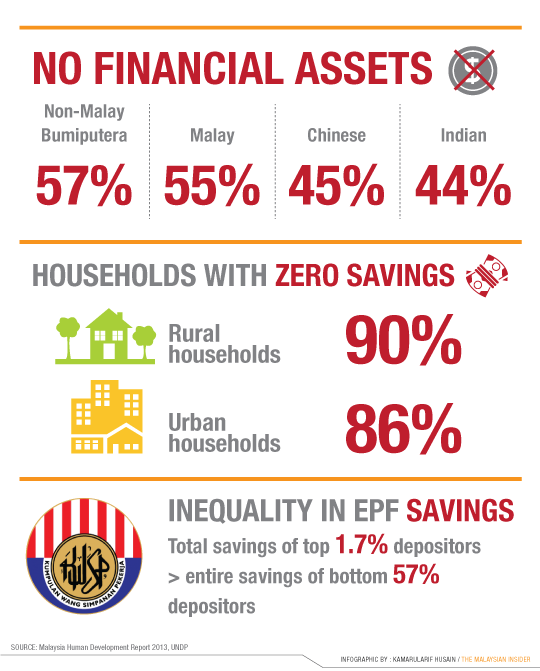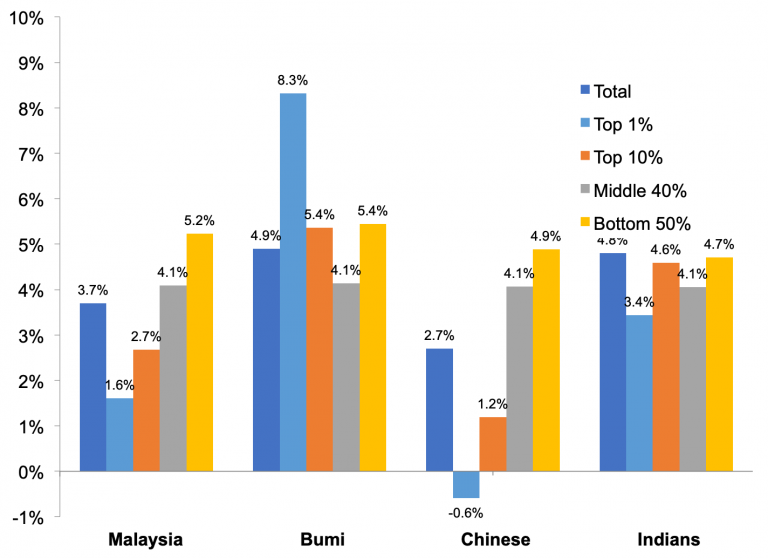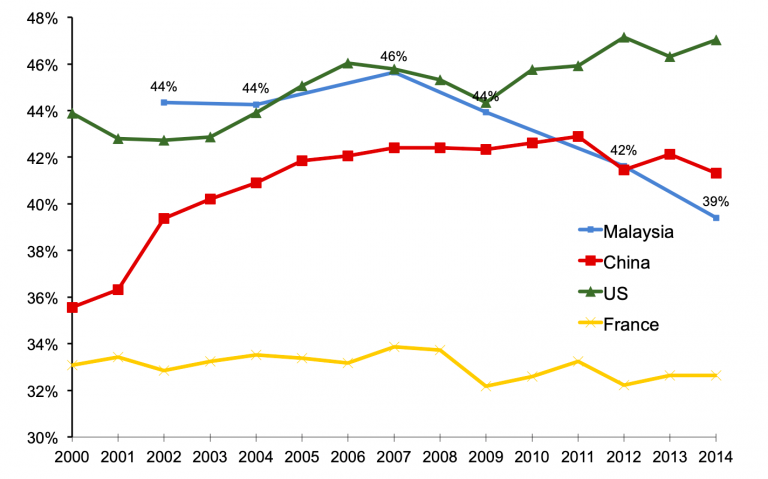22nd March 2023
A STORM Paper
1] INTRODUCTION
Challenges facing state of nation are poverty, inequality, and marginalisation where Malaysia poverty rate for 2015 was 4.80% which is the percentage of the population living on less than US$5.50 a day, (World Bank).
A] Poverty
The revised national poverty line in July 2020, according to World Bank, is that 5.6% of Malaysian households are currently living in absolute poverty, and that the nation has to focused on addressing the well-being of the poorest 40% of the population (“the bottom 40” or B40). This low-income group remains particularly vulnerable to economic shocks as well as increases in the cost of living and mounting financial obligations.

Following the removal of broad-based subsidies, even though succeeding regimes have gradually moved toward more targeted measures to support the poor and vulnerable, mainly in the form of cash transfers to low-income households, these uneven – and the indirect and unjustified benefits to the upper class of society like in petroleum subsidy and no wealth or capital gain taxes imposed – only perpetuate the class divisions, thus

B] INEQUALITY
Capitalism is not towards human development but privately accumulated profits by a tiny minority of the population. The implication is that although the middle 40 per cent and the bottom 50 per cent benefited significantly from economic growth, however, glaringly is the ethnocapital Bumiputera in the top income groups (the top 1 per cent and the 10 per cent) benefitted the most from economic growth :

whereby the top 1% of Bumiputera is way above the national income, and other communities incomes, too. This is a decomposition of growth rate of real income per adult, 2002 to 2014 (pre-tax national income) : Khalid 2019
Income inequality in the country, in fact, remains high relative to other East Asian countries. While income growth for the bottom 40 has outpaced the top 60 over much of the last decade, the absolute gap across income groups has increased, contributing to widespread base of the poor being left behind.
Eventually, even thirty years after the NEP (New Economic Policy) implementation, by 2002, Malaysia’s inequality level had remained extremely high: its top 1 per cent income share was 19 per cent and the corresponding number for the top 10 per cent was 44 per cent, which is higher than those of the US and substantially even higher by inequality than those of China until post-2012 : Notes: Distribution of pretax national income (before all taxes and transfers, except pensions and unemployment insurance) among adults. Equal-split-adults series (income of married couples divided by two). Imputed rent is included in pre-tax fiscal income and pre-tax national income series; source: Khalid 2019.
Notes: Distribution of pretax national income (before all taxes and transfers, except pensions and unemployment insurance) among adults. Equal-split-adults series (income of married couples divided by two). Imputed rent is included in pre-tax fiscal income and pre-tax national income series; source: Khalid 2019.
It is during this period where the share of the wealth is acutely benefitting the high-income group of capital-endowed class :
The undeniable fact as to why many bumiputera had not attained parity despite +60 years of neo-liberal-enforced economic development is the existence of a new class of compradore capitalist.
According to the UNDP 1997 Human Development Report, and the 2004 United Nations Human Development Report, Malaysia has the highest income disparity between the rich and poor in Southeast Asia, greater than that of Philippines, Thailand, Singapore, Vietnam and Indonesia. Malaysia’s 50 Richest 2020; Forbes 2022. With globalisation, rentier capitalism attaches to the neo-imperial monopoly capitalism and its link to the global commodity chain dimension because of the multiple roles of rent intermediaries between capital and its accumulation; the direct consequence is in the accentuating of wealth disparity with the working class.
Malaysia’s 50 Richest 2020; Forbes 2022. With globalisation, rentier capitalism attaches to the neo-imperial monopoly capitalism and its link to the global commodity chain dimension because of the multiple roles of rent intermediaries between capital and its accumulation; the direct consequence is in the accentuating of wealth disparity with the working class.
This is happening even as the household income has since raised Malaysia’s average poverty line income (PLI) to RM$2,208 from RM$980 in 2016. It also means that the new metric brings Malaysia’s absolute poverty rate to 5.6% in 2019. This means that almost 6 out of 100 households in Malaysia could not afford to meet basic needs like food, shelter and clothing.
In 2019, the high-income T20 household would have earned 10 times more than the low-income household. In 2020, the high-income household still earns 6.7 times the low-income household. Though the Gini coefficient relative gap has narrowed, the absolute Gini coefficient gap has increased (as an instance, the earnings difference of T20 was RM$9,000 in 2019, but it was at a very high figure of RM$17,000 by 2020). Therefore; there is no equality improvement, but extremely widen inequality cutting across racial groupings : Source: Martin Ravallion 15 April 2019 .
Source: Martin Ravallion 15 April 2019 .
Therefore, more than ever, there is a need to better understand and properly measure poverty and inequality. This is so that responses and policies can be rolled out more effectively and equitably.The government is currently considering an update of its poverty line income and multidimensional poverty index. This is not only timely but also important to improve poverty measurement to a standard commensurate with Malaysia’s current living standards and state of development.
C] Marginalisation surfaces because of wide-differentiated poverty across states.
Indeed, the poverty rate in Sabah in 2020 was the highest in the nation – more than three times the national average. That 36 percent of all those living in poverty in Malaysia are located in Sabah only denoted the development of underdevelopment in a natural resource-rich state with oil and timber.

Sabah had a gross domestic product per capita of RM5,745, compared with the national average of RM7,901, (read csloh , Sabah – a state underdeveloped).
By 2019, many districts in the Sabah state were in poverty rates in excess of 50 percent.

Even within an urban setting, in the study, Children Without – a study of urban child poverty and deprivation in low-cost flats in Kuala Lumpur, UNICEF found out that :
On top of the disadvantages of the rural urban disparity as a factor of inequality in the country, (World Bank, 2022; and World Bank, 2019), students in rural communities tend to come from a lower socioeconomic class as compared to their urban counterparts; and these inadequacies permeated across states, too, where in Sabah and Sarawak there are high numbers of children between 5 and 19 years old who have no schooling.
Young children are being marginalized.

2] A STRUCTURAL APPROACH demands over the longer term, as Malaysia converges with high-income economies, incremental growth will depend less on factor accumulation and more on raising productivity to sustain higher potential growth. While significant, Malaysia’s productivity growth over the past 25 years has been below that of several global and regional comparators.
Core of any national economy’s long-term growth is the rise of productivity, and there are only two ways for achieving that. One is a more sophisticated division of labour, the other is scientific and technological advancement. Whilst market scale can be maximized in an interconnected international environment, especially connectivity with developed economies through global supply chain mechanisms, the division of labour needs to be more sophisticated (skills with expertise) and to be professionalised (enhancing with upskilling), enabling thus productivity to be raisen. Similarly, it is also only through connectivity and cooperation with other partnered countries can a nation upgrades the technological level of its industries.
Therefore, ongoing reform efforts to tackle key structural constraints will be vital to support and sustain Malaysia’s development path.
According to the World Bank’s Human Capital Index, Malaysia ranks 55th out of 157 countries. To fully realize its human potential and fulfil the country’s aspiration of achieving the high-income and developed country status, Malaysia will need to advance further in education, health and nutrition, and social protection outcomes. Key priority areas include enhancing the quality of schooling to improve learning outcomes, rethinking nutritional interventions to reduce childhood stunting, and providing adequate social welfare protection for household investments in human capital formation.
To achieve this grandeur mission goal the Targeted Area-based Poverty Alleviation Objectives (TAPAO) have to be implemented.
The targeted area-based poverty alleviation objectives (TAPAO) are to adopt instruments from nationwide institutions – experienced staff and their expertise together with endowed national resources – to provide basic relief to broaden targeted interventions regionally; followed by more narrowly focused programs for poor district areas, daerah², and villages kampung²; and finally with measured activities targeting specific poor households directly. Concurrently, to be successful – maintainable and sustainable – the coverage of social protection programs (from better education facilities, community-based healthcare to supportive social benefits) have to be rapidly expanded, too.
TAPAO in sizing and averaging rural per capita income must also focus on the country’s hinterlands, especially the mountainous interiors of Sarawak and Sabah.
Refining the geographical target of poverty reduction programs is a necessity. The TAPAO needs to shift from daerah² to kampung² including more likely
some outside the list of poverty-stricken daerah, too. Collectively, those designated kampung² (villages) may cover
a certain high percent of the country’s rural poor. Designated villages could then apply for projects to support local production and infrastructure (including makan-pada-kerja : food-for-work programs, worker training, and agribusiness development comprising technology extension services; not to be neglected, government-linked investments in social infrastructure (schools, clinics, community and recreation centers), with a particular strong participatory community-based self-help gotong-royong approachroyong.
3] SUSTAINABILITY
By incorporating two Malay notions, kemampanan (ongoing, collective effort) and keseimbangan (balance), a Malaysian definition would extend sustainability beyond the natural environment to include rural and urban communities, families and individuals who form an integral part of the ecosystem we know as Malaysia.
The economic development of a nation demands that its goal to attain high-income and developed nation status while ensuring that shared prosperity is also sustainable.
As one of the many Global South countries, Malaysia is one of the lmost open economies in the world with a trade to GDP ratio averaging over 130% since 2010. Openness to trade and investment has been instrumental in employment creation and income growth, with about 40% of jobs in Malaysia linked to export activities. After the Asian financial crisis of 1997-1998, Malaysia’s economy has been on an upward trajectory, averaging growth of 5.4% since 2010, and is expected to achieve its transition from an upper middle-income economy to a high-income economy by 2024 and beyond.L
That sustainable pulsation in growth – and progress in economic development – has to be continually maintained.
4] REAL PROSPERITY is enshrined in the Islamic concept of falah (success, happiness and wellbeing). Unlike capitalism, however, Islam extends the falah concept to the entire community rather than restricts it to single individuals, stressing that abundance is a blessing to be shared.
The Qur’an places special emphasis on wealth distribution where wealth should not be hoarded by the rich. In the Malaysian context, we find that the neoliberal policy of the preceding regimes, with its emphasis on free market and privatisation, have only benefited a few elites, especially wealthy compradore capitals. This legacy economic ethos must be overhauled so that a just economic system that is equitable to all irrespective of race and creed while upholding the true spirit of democracy, individual rights, tolerance, gender equality and pluralism permeates right to the soul of every rakyat-rakyat.
This vitality vision for the economy strikes a chord with the Qur’anic message:
“…so that it (wealth) may not be [a benefit] going round and round among such of you as may [already] be rich…”
[Sura al-Hashr; 59:7]
Plato – in The Republic – once said:
“There should exist among the citizens neither extreme poverty nor, again, excessive wealth, for both are productive of great evil”
Related Readings

You must be logged in to post a comment.